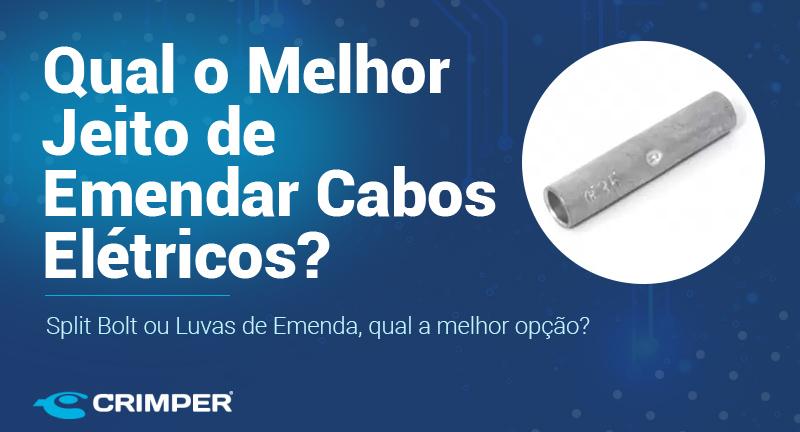In this very special article from the Crimper do Brasil Blog, we will show you the best way to splice electrical cables, highlighting the main differences between the two most well-known options among electricians: the Split Bolt and compression sleeves, and why you should opt for the second option!
Split Bolt: Popular, But Not the Safest
For the vast majority of Brazilian electricians, the Split Bolt connector – also known as a split screw – is the most well-known method for splicing electrical cables. However, that doesn’t mean it’s the best method. Using Split Bolt can bring several issues to the connection, all of which are related to the threading that is part of this type of connector.
First and foremost, there is a significant volume at the splice location, which can cause trouble when organizing cables inside the junction box. Its insulation tends to be more complicated to apply, potentially tangling and taking up more space than necessary. Another, more severe problem is related to temperature changes. As these changes occur, with hot days contrasting with colder days, the thread can expand, loosening the splice, leaving the conductors loose, and leading to poor contact.
Finally, two wrenches are needed to make a splice with the Split Bolt: one to hold the connector and another to turn the nut, making it difficult to determine if the thread is securely tightened. It can either come loose after a while if not tightened correctly or strip if overtightened, leading to the connector’s disposal.
Compression Gloves: Features That Make This the Best Option
Compression sleeves – also known as compression sleeves – are the best alternative for ensuring a safer electrical cable splice. In a test shown in the video you can check below, our electrician, Leônidas Borges, took 3 minutes and 21 seconds to splice a cable using the Split Bolt. Using Crimper’s compression sleeves, he took 2 minutes and 15 seconds in a much cleaner and faster execution.
Watch the full video:
Unlike the Split Bolt, the pressure applied with a compression sleeve is much greater and leaves no room for poor contact. Moreover, you only need one compression plier, instead of two wrenches. In the video, the CR31 from Crimper was used, which you can access by clicking here. The key feature of this tool is that it only releases the splice when it reaches the exact compression point, avoiding any possible issues with loose cables and poor contact, which are common with the Split Bolt.
CR-31 was specially developed for compression sleeves, optimizing the work for our electrician friends. Crimper offers a sleeve for every type of conductor. To learn all the detailed specifications and find the one that best fits your project, click here:
https://crimper.com.br/en/categoria/electrical-terminals/compression-gloves/
Until next time!

